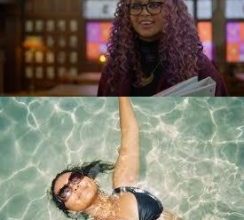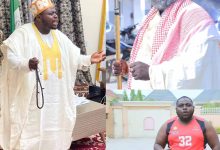
Jacinto Lara Biography
Jacinto Lara (5 June 1777, Carora – 25 February 1859, Barquisimeto) was a Venezuelan independence leader and hero during the Venezuelan War of Independence.
His involvement included taking part in Simón Bolívar’s 1813 Admirable Campaign. In 1821, he served briefly as Prefect of the Magdalena River and Isthmus.
He later led a reserve division in the Battle of Ayacucho (1824), a pivotal military engagement during Peru’s War of Independence.
fought in cities located in the central-western region of the current Venezuelan state of Lara, which is named in his honor.
At the beginning of the independence events on April 19, 1810, he joined the young revolutionaries of the Patriotic Society of Caracas and joined the militias of Araure and Ospino, being later named commander.
The following year he entered combat under the orders of General Francisco de Miranda in the battle of Cerro del Morro against the insurgents of the city of Valencia, a battle in which Miranda’s troops emerged victorious, the battle of the siege of San Carlos in 1831. and in the first battle of Carabobo.

Jacinto Lara’s Personal information
Nickname: “The Victor”
Birth: May 28, 1778, Carora, Lara State
Death: February 25, 1859 Barquisimeto, Lara State
Burial: National Pantheon of Venezuela View and modify data on Wikidata
Nationality: Venezuelan
Children: Jacinto Fabricio Lara
Occupation: Political and military View and modify data on Wikidata
Years Active: 1810-1831
Loyalty: Liberating Army
Military Rank: Major General
Conflicts: Venezuelan War of Independence
Independence of Colombia
Independence of Ecuador
Independence of Peru
Jacinto Lara Early Life, Education, Family
Jacinto Lara was born on May 28, 1778, in the town of Carora in the then Viceroyalty of New Granada dependent on Spain, currently Lara State in Venezuela, the name of the state is named in his honor.
He was the son of Miguel Román de Lara y Buitriago, who came from the Iberian Peninsula, and Juana Paula Meléndez y Urrieta, a native of Carora.
He married Nemesia Urrieta Peraza on September 15, 1830. The couple had 5 children: Nemesia, Elodia, Francisco Javier, Eladio and Jacinto Fabricio.
He dedicated himself to agriculture and livestock in the plains of Barinas, trading cattle from the plains to the city of Caracas, until in 1810, he joined the revolutionaries of the Patriotic Society of Caracas, getting involved in the fight for independence.
Jacinto Lara Career
In 1812, he was promoted to lieutenant colonel and later served under Simon Bolívar.
The next year, he participated in the fight of Cúcuta against Colonel Ramón Correa.
During the Admirable Campaign (Campaña Admirable), he fought alongside Bolívar in the Battles of Niquitao, Los Horcones, and Taguanes on July 2, 11, and 31, respectively.
He remained with the Liberator and took part in the siege of Puerto Cabello, as well as the fights of Bárbula, Trincheras (two actions near Naguanagua), and Vigirima.
In 1814, he participated in the Battle of Carabobo on his 36th birthday. Later, under General Rafael Urdaneta’s orders, he continued executing operations in the west of the country, including against 22 Capuchins who had been “removed” from the area around El Chaparro by Bolívar.
During the retreat to Nueva Granada, Bolívar took leadership of Urdaneta’s men and led them to Santafé de Bogotá to combat Manuel Bernardo Álvarez.
The operation ended in December of the same year.
Jacinto Lara With Simón Bolívar
In 1812 he was appointed lieutenant colonel and went on to serve under the orders of Simón Bolívar and the following year he took part in the battle of Cúcuta against Colonel Ramón Correa.
Together with Bolívar, he participated in the Admirable Campaign, standing out in the battles of Niquitao, Los Horcones, and Taguanes, all of which took place in July of that year, on the 2nd, 11th, and 31st respectively.
He continued with the Liberator, participating in the siege of Puerto Cabello and the battles of Bárbula, Trincheras, and Vigirima.
In 1821 he took part in the battle of Carabobo, on May 28, the day he turned 36, and then, under the orders of General Rafael Urdaneta, continued operations in the west of the country.
He participated in the retreat to Nueva Granada, where command of Urdaneta’s forces was assumed by Bolívar, and they marched to Santafé de Bogotá to fight against Manuel Bernardo Álvarez, concluding the operation in December of that same year.
Jacinto Lara With Paez
When Bolívar traveled to the Antilles in 1815, Lara stayed in New Granada until the arrival of Pablo Morillo and, in the company of a group of republicans, joined the forces of General José Antonio Páez who were in the plains of Apure.
Together with José Antonio Páez, he participated in the episodes of El Yagual and Mucuritas. He achieved the rank of colonel in 1817.
He was involved in the episodes of the Caroní Missions that ended with the execution of 22 Capuchin friars originally from Catalonia.
In the following years, 1815 and 1816, Jacinto Lara stands out in the capture of San Antonio de Apure and Mucuritas.
In recognition of the actions undertaken during the operations of the conquest of Guayana, in which he participated under the orders of General Manuel Piar and Bolívar himself, he was promoted to general in 1817.
Once again under the orders of the Liberator, he participated in the Center campaign. which was ruined as a result of the defeat in the battle of La Hogaza on December 2, 1817.
He accompanied the Liberator in the defeat of Pablo Morillo in Calabozo in 1818. Together with General Francisco de Paula Santander, he defeated Carlos Tolrá, favorite of Viceroy Samano, in Casanare in 1819 where Jacinto Lara served as deputy chief of the General Staff of the Liberating Army.
That same year, Bolívar commissioned him to carry out a campaign against Maracaibo, which was aborted by the Armistice of Trujillo.
He served as chief of the General Staff and in 1821 he was governor of Santa Marta and Cartagena de Indias.
Jacinto Lara In Peru
In 1822 he moved to Peru, already as a brigadier general, to participate in the Southern Campaign together with General Manuel Valdés, integrating the Colombian auxiliary division of Peru.
In 1824 he participated, under the orders of Antonio José de Sucre, in the battle of Junín.
Afterward, he was promoted to division general of the rearguard of the army and, subsequently, he participated in the battle of Corpahuaico, which made him a hero by saving the Rifles, Vencedor, and Vargas battalions.
On December 9, 1824, he took part in the decisive battle of Ayacucho, where he commanded the reserve division of the United Army.
His actions in Ayacucho allowed him to obtain the rank of division general.
In 1825 he was appointed general commander and mayor of Cuzco, Arequipa, and Ayacucho. Lara was the only figure who participated during the entire emancipation struggle that began in Caracas in 1810 and culminated in Peru in 1824.
He also held the title of commander of the auxiliary Colombian division of Peru.
On January 26, 1827, he was arrested in Lima, where he held the position of commander of the auxiliary Colombian division of Peru when an anti-Bolivarian movement promoted by the then vice president of Gran Colombia, Francisco de Paula Santander, triumphed there.
He remained in the El Callao prison until January 30, when he was embarked and sent to Colombia, where he would arrive on February 9 at the port of Buenaventura, and on the 20th of the same month he was released. Back in Venezuela, he held the positions of mayor and general commander of the department of Zulia and general commander of the department of Orinoco in 1828.
Jacinto Lara Civil Life and Death
After the division of Gran Colombia, he retired from public life in 1831, although he accepted the governorship of his native province, Barquisimeto, in 1843 and left office four years later.2
On February 25, 1859, at the age of 81, he died in Barquisimeto. His remains lie in the National Pantheon of Venezuela since July 24, 1911.
Jacinto Lara Distinctions
Jacinto Lara obtained many decorations and distinctions, among them the “Order of the Liberators of Venezuela” and the “Bust of the Liberator” shield.
He is the eponymous hero of the Lara State according to the decree issued by the Legislative Assembly in 1881.
Plaza Jacinto Lara is a public space located in the city of Barquisimeto. It is located between the Church of San Francisco de Asís and the Ateneo de Barquisimeto, on Carrera 17, between streets 22 and 23.
The Jacinto Lara International Airport of Barquisimeto.
In Valencia, Venezuela, the main road that divides the city into north and south is named Avenida Lara, in honor of this patriot.
Every year, the Jacinto Lara High School in the Palavecino municipality holds a parade with the band of this institution to honor this hero.
In Lima (Peru) his memory is honored with a bust in the Panteón de los Próceres, an avenue and a street in the San Isidro district.
In the sanctuary of Ayacucho, there is a bronze statue at the foot of the obelisk commemorating the Battle of Ayacucho.

Jacinto Lara Legacy
The Venezuelan state of Lara and Barquisimeto’s airport (Jacinto Lara International Airport) were both named after him.
The Order of Division General Jacinto Lara, a public service and military medal, is named after him.
He was interred in the National Pantheon of Venezuela.
Discover more from Labaran Yau
Subscribe to get the latest posts sent to your email.



















